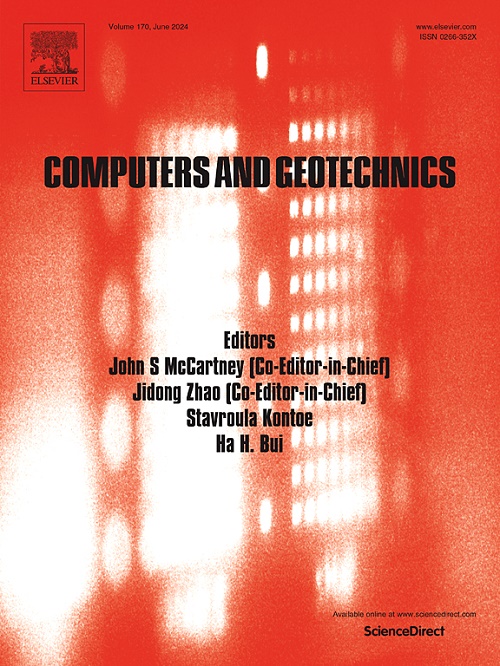为岩土工程应用开发更强大的人工智能地下地震成像技术
IF 6.2
1区 工程技术
Q1 COMPUTER SCIENCE, INTERDISCIPLINARY APPLICATIONS
引用次数: 0
摘要
非侵入性地震成像有可能经济有效地评估大量地下材料,为岩土工程现场调查提供信息。然而,使用全波形反演(FWI)的地震成像需要大量的计算时间,并且依赖于初始启动模型。因此,FWI尚未广泛应用于岩土工程实践。之前在相对简单的两层模型上的研究表明,数据驱动的人工智能(AI)模型在预测横波速度(v)的二维图像方面可能与FWI一样有效。此外,人工智能模型预测几乎可以在数据采集后立即进行,不需要初始启动模型。我们通过开发一种新的地下地震成像人工智能模型来检验这些发现的普遍性,并在此基础上做出了一些值得注意的贡献。首先,我们构建了一个多模态人工智能模型,该模型结合了地震波场的时域和频域表示来预测50米× 20米的地下Vs图像。其次,我们开发了一个新的多样化数据集,其中包含100,000张Vs图像及其相应的地震波场来训练人工智能模型。第三,我们提出了四种数据驱动地震成像的物理信息数据增强方法。第四,我们开发了两个预测一致性测试来评估模型在真实地下未知情况下的性能。我们的最终模型已经公开,能够从单个地震波场预测地下v图像,平均绝对百分比误差(MAPE)为24%。将该预测模型应用于现场数据集,结果表明该模型与同一地点的当地地质和横波折射测量结果一致。本文章由计算机程序翻译,如有差异,请以英文原文为准。
Toward more-robust, AI-enabled subsurface seismic imaging for geotechnical applications
Non-invasive seismic imaging has the potential to cost-effectively evaluate large volumes of subsurface material to inform geotechnical site investigation. However, seismic imaging using full waveform inversion (FWI) requires significant computational time and is dependent on an initial starting model. As a result, FWI has not yet been widely adopted into geotechnical practice. Previous efforts, on relatively simple two-layered models, indicate that data-driven artificial intelligence (AI) models may be as effective as FWI at predicting 2D images of shear wave velocity (). Furthermore, the AI model predictions can be made almost instantaneously after data acquisition and do not require an initial starting model. We examine the generality of these findings by developing a new AI model for subsurface seismic imaging, whereby we make several notable contributions. First, we architect a multimodal AI model that combines time- and frequency-domain representations of the seismic wavefield to predict a 50 m by 20 m subsurface image of . Second, we developed a new diverse dataset of 100,000 images with their corresponding seismic wavefields to train the AI model. Third, we propose four physics-informed data augmentations for data-driven seismic imaging. Fourth, we develop two prediction consistency tests to evaluate the model’s performance when the true subsurface is unknown. Our final model, which has been made publicly available, is capable of predicting a subsurface image from a single seismic wavefield with an average, mean absolute percent error (MAPE) of 24 %. The predictive model is applied to a field dataset and shown to be consistent with local geology and shear-wave refraction measurements from the same location.
求助全文
通过发布文献求助,成功后即可免费获取论文全文。
去求助
来源期刊

Computers and Geotechnics
地学-地球科学综合
CiteScore
9.10
自引率
15.10%
发文量
438
审稿时长
45 days
期刊介绍:
The use of computers is firmly established in geotechnical engineering and continues to grow rapidly in both engineering practice and academe. The development of advanced numerical techniques and constitutive modeling, in conjunction with rapid developments in computer hardware, enables problems to be tackled that were unthinkable even a few years ago. Computers and Geotechnics provides an up-to-date reference for engineers and researchers engaged in computer aided analysis and research in geotechnical engineering. The journal is intended for an expeditious dissemination of advanced computer applications across a broad range of geotechnical topics. Contributions on advances in numerical algorithms, computer implementation of new constitutive models and probabilistic methods are especially encouraged.
 求助内容:
求助内容: 应助结果提醒方式:
应助结果提醒方式:


